Welcome to the Rubber Republic!
In November, we took a trip out to Firestone's rubber plantation, about an hour's drive east out of Monrovia.
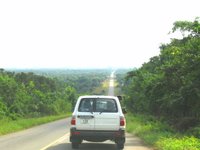

The place is also known as the Rubber Republic: Firestone has been in Liberia since 1926, when it obtained a 99-year lease of one million acres of land at an annual rent of US$60,000 - that's less than $0.06 per acre ... no doubt the cheapest property deal ever.
That's how desperate for money Liberia was at that time (Later in 1930, the Christy Commission set up by the League of Nations implicated Liberia in allegations of trading in slaves by forcefully exporting Liberian workers to the Spanish colony of Fernando Po to work on cocoa plantations in return for money... ).

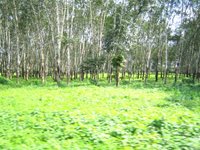
About 7,000 people are currently working for Firestone on its rubber plantation (roughly the same number as in 1935) and live with their families on the plantation (another 12,000 or so). Firestone are in the process of renovating schools and hospitals on the plantation that were destroyed or looted during the civil war.
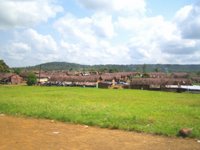
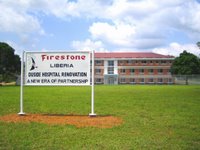
Some workers showed us how they tap the trees. Latex is produced by "bleeding" the tree. Using a knife, the worker cuts of the bark of the tree around the tree at angle that will allow the latex to slowly flow out into little cups. Everyday they return to the tree, collect the cup full of latex and cut a small piece of bark off.
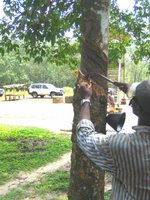
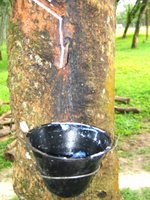
One of the supervisors there explained to me how the workers are paid. The workers - called "tappers" - are paid by weight. The tappers collect all the latex into buckets and bring them to one of the collection centres. There, it is weighed by one of the supervisors and then poured into big tank. The tappers earn around $0.60c per pound of liquid rubber (latex) and make about $3.00 on a good day... It takes about 150-200 little cups of latex to make a pound, so that means they tap about 1,000 trees a day... and they work 6 days a week (although the supervisor said most workers don't take Sundays off during the dry season). Latex left overnight dries up, but that can also be used.
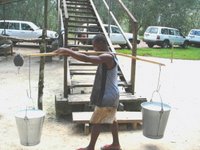

The latex is then brought to Firestone's processing plant where it is processed and then exported to use as an ingredient like rubber, but also used in its pure form to make condoms for drunk adults to use on their mate of choice and surgical gloves for use by fascit immigration and customs officials ... and let's not forget fetishist S&M clothing too!


Latex which is delivered to Firestone in solid form (dried overnight) is also processed on the plant - it's dried, baked and cut into 35kg rubber blocks that will mainly be used for making tires. The processing of blocks is extremely smelly and there's a nasty cheesey smell that permeates the whole plantation.


Rubber trees are not indigenous to Africa as rubber originates from Brazil. Seeds were brought back to London in the 1870's before subsequently being implanted in Asia and Africa. Another example of how West African arrable land was used by the colonial powers to plant crops (like cocoa, also imported from South America) that ave no traditional dietary or commercial use to Africans.

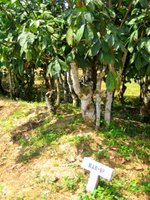


0 Comments:
Post a Comment
<< Home